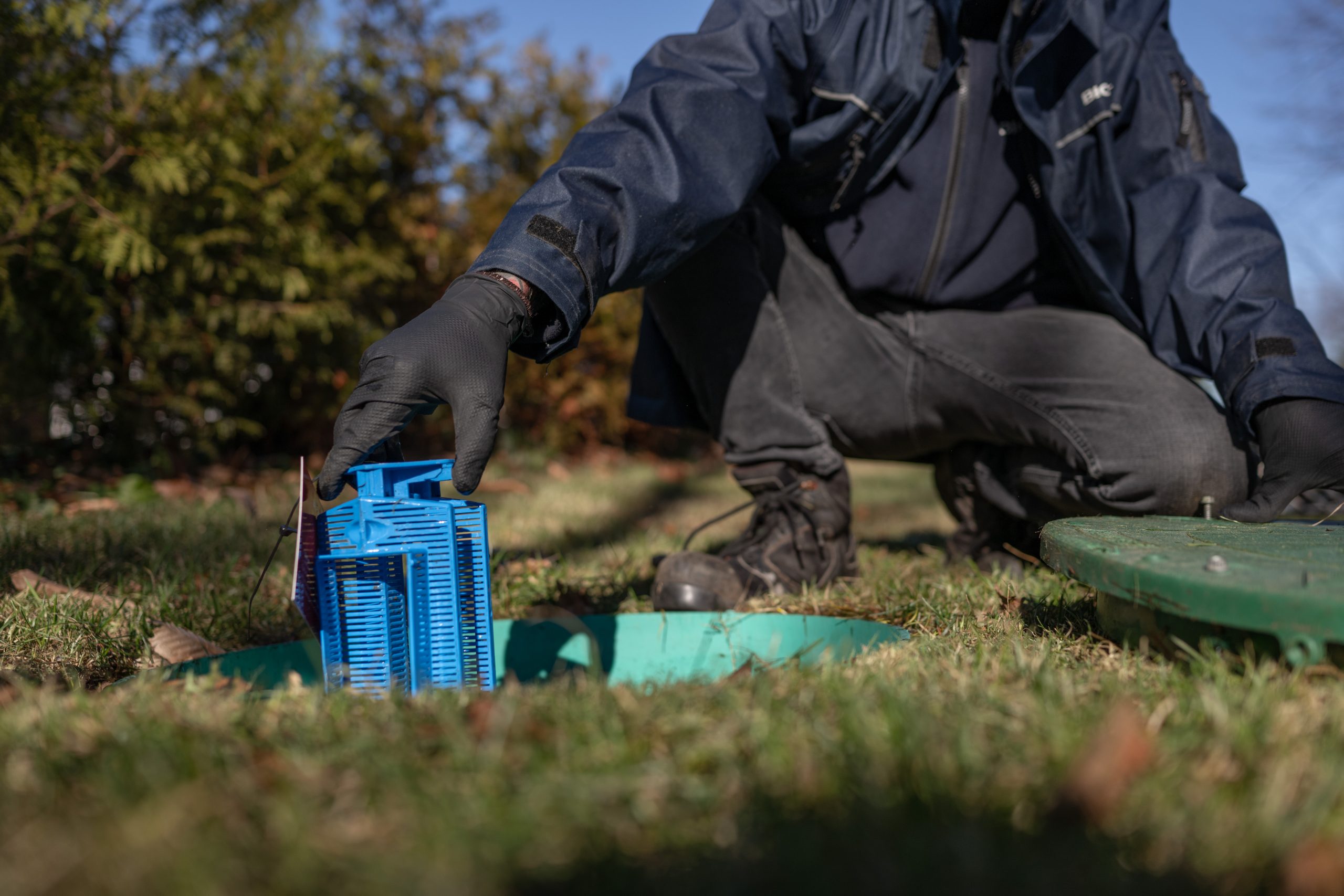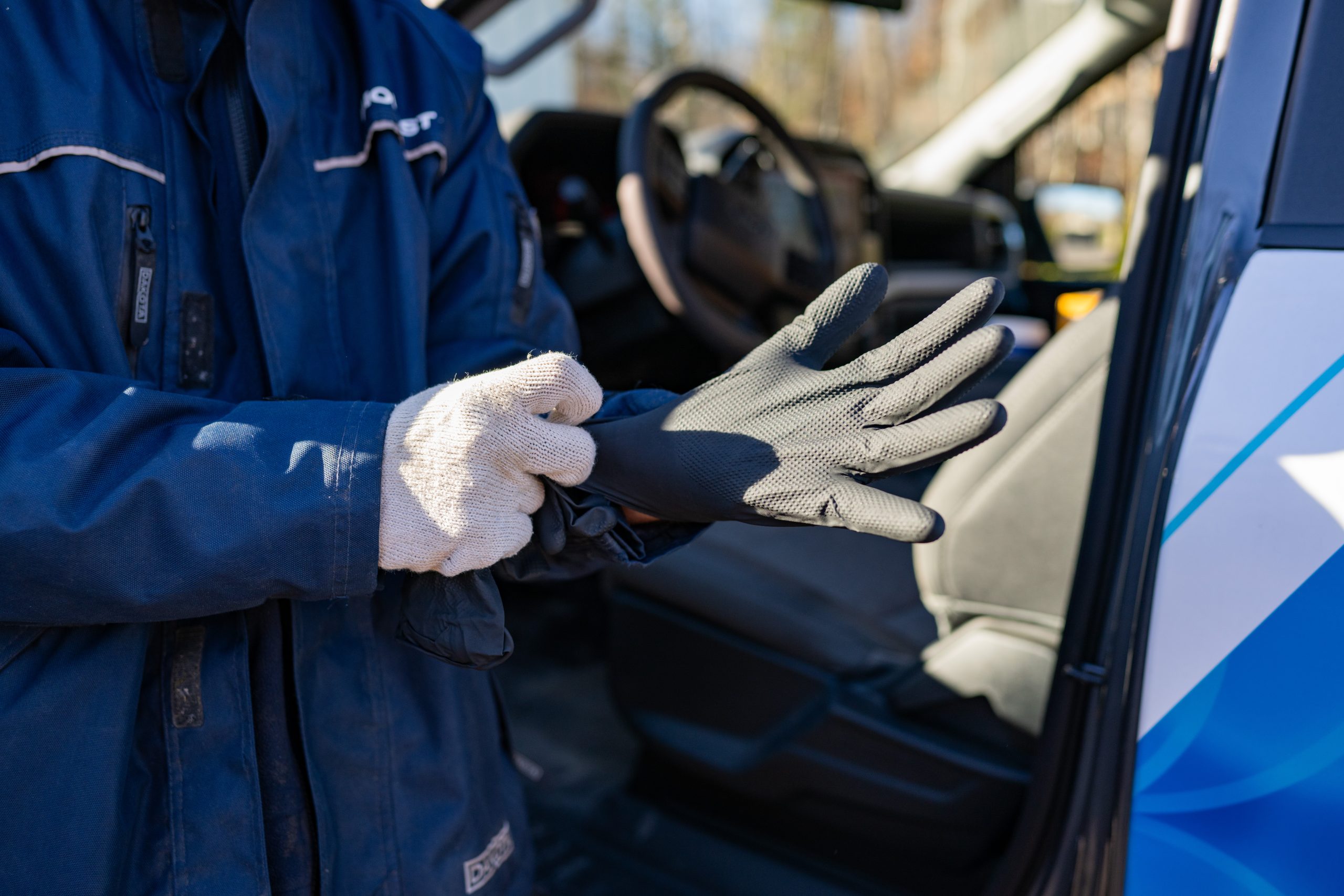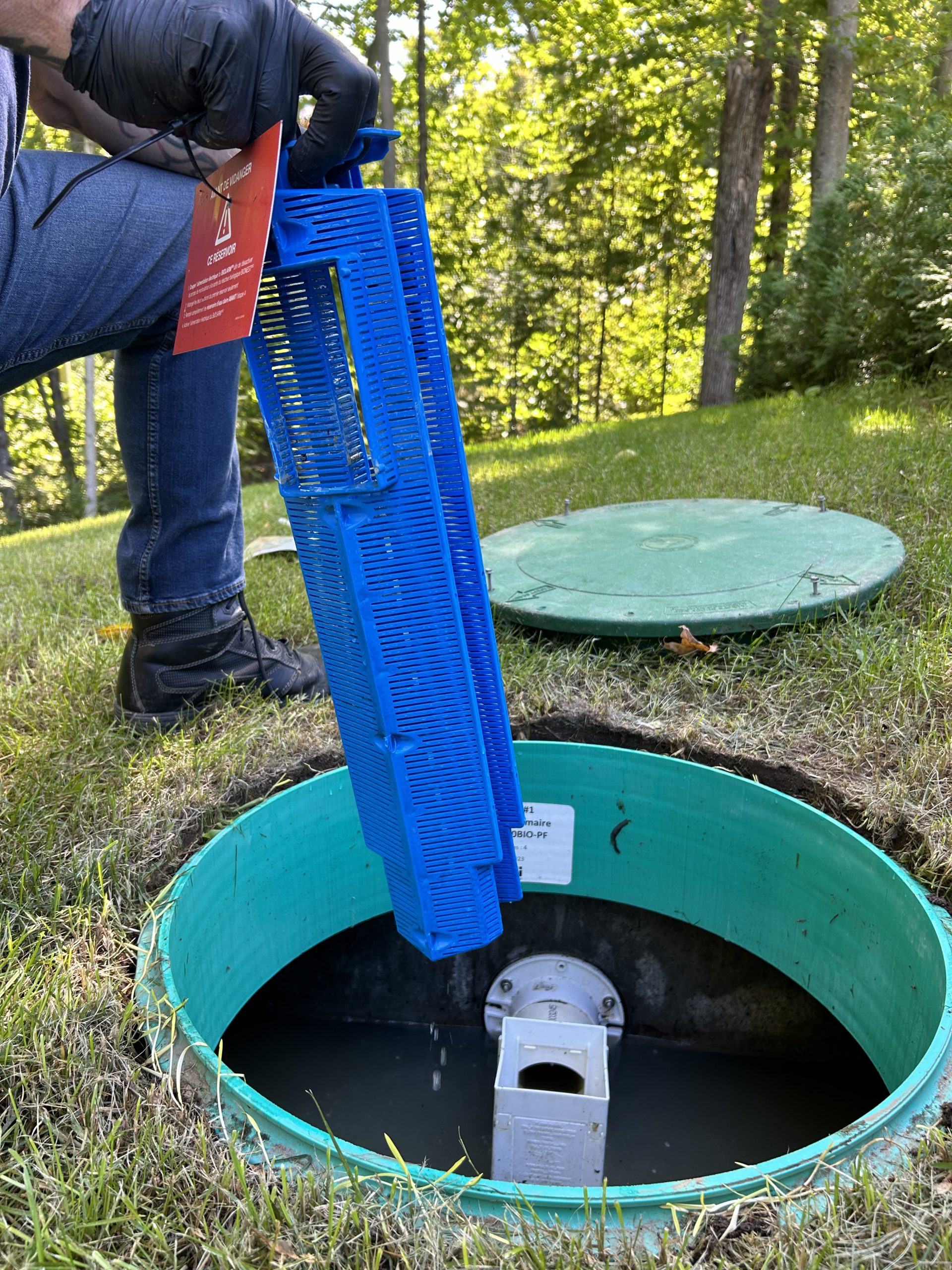To avoid these problems, the effluent filter should be cleaned twice a year for permanent residences, or once a year for seasonal cottages, depending on use.
Cleaning the filter is straightforward, though not the most pleasant task. Wear long sleeves, pants, and rubber gloves. Open the second septic tank lid, grab the filter by its handle, and pull it out while staying directly over the opening. Be careful not to spill wastewater on the ground, as it may contain fecal bacteria.
Quickly move the filter over the first lid to avoid splashing, and spray it clean with a garden hose. Then return to the second lid and reinstall the filter, making sure to follow the directional arrows stamped on the unit.






